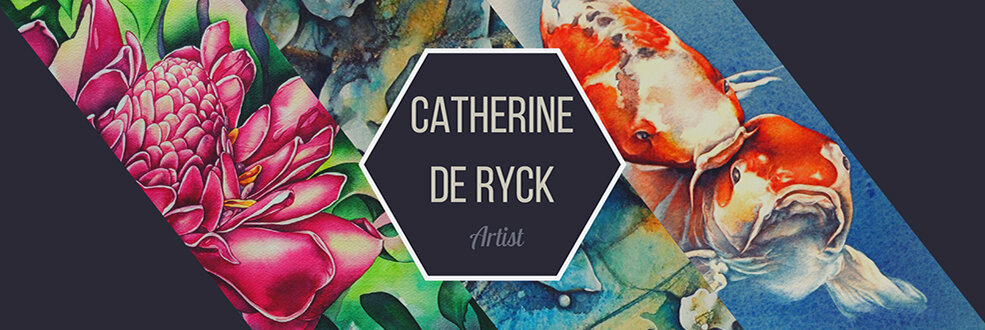Le portrait créatif / The creative portrait

Stargazing. Aquarelle / Watercolour, Saunders-Waterford 300g/m2. 38 x 28 cm. 2012.
Les pigments aquarelle en suspension dans l'eau et en mouvement sur le papier permettent de représenter l'imaginaire, les illusions, émotions et sentiments avec créativité et personnalité. Lorsque le papier est humide et en fonction du comportement des pigments utilisés, les couleurs interagissent entre elles de manière imprévisible. Ceci donne naissance à de magnifiques motifs, cernes, granulations, textures ... mais peut également poser problème pour le peintre qui doit contrôler les transitions de valeurs de son sujet. Ce contrôle peut être obtenu en ajustant le comportement de chaque élément : l'eau (sur le papier et dans le pinceau), le pigment et le papier.
Puisque la lumière pénètre la couche pigmentaire et rebondit sur la surface du papier, l'aquarelle peut être comparée à la sculpture dans le sens où l'aquarelliste extrait les pâles et le blanc du papier en peignant à l'aide de tons ou valeurs foncées les zones d'ombre qui entourent la lumière. Ce procédé est également appelé Technique du Négatif. Comme le sculpteur évide l'argile ou tout autre matériel, l'aquarelliste peint l'espace négatif (souvenez-vous, il ne s'agit pas du sujet lui-même mais bien des vides qui l'entourent) pour laisser émerger son sujet.
Ces deux principes m'ont amenée à peindre des fonds texturés ou à créer des surfaces "accidentées". Je choisis ensuite l'un d'eux pour représenter avec créativité un portrait, ou plus précisément une "sculpture" car ma dernière série de travaux se concentre sur les statues et autres élements d'architecture. La combinaison de ces deux techiques fait partie intégrante de mon procédé pictural :
-
Premièrement, explorer et comprendre toutes les possibilités qu'offre le médium ;
-
Deuxièmement, exploiter les effets obtenus en vue de représenter un sujet déterminé et de suggérer une émotion ou une atmosphère particulière dans le tableau.
Exemples de fonds texturés / Samples of textured backgrounds.
Watercolour pigments suspended in water and flowing on the paper constitute an unique way to creatively represent dreams, illusions, emotions and bright feelings. When the paper is wet and depending on the behaviour of the pigments used in the process, colours intermix on the paper in a somewhat unpredictable way. This creates fantastic nonlinear patterns, backruns, granulations, textures ... but also problems for the watercolor painter, who may need to control value transitions of the subject. Control can be achieved by adjusting the behaviour of each element: water (on the paper and in the brush), pigment, paper.
As the light must be shining through the paper, watercolour can be compared to sculpture: the watercolour painter sculpts away parts of the white of the paper with the colours and has to paint the darker values or tones surrounding the light. This process is also named Negative Painting. Like the sculptor hollows out the clay or any other material, he paints the negative space (remember, not the subject itself but the area around it) to let the subject emerge.
Both elements lead me to paint textured backgrounds or to create accidented surfaces. Then, I pick one and use it to paint a creative portrait, more precisely a "sculpture" as my latest watercolour series concentrate on statues or elements of architecture. The combination of these techniques is part of my current painting process:
-
First, to explore and understand all the possibilities and effects that the medium has to offer ;
-
Then, to exploit these effects in order to depict a subject but also to suggest a particular emotion or atmosphere in the completed work.





/https%3A%2F%2Fassets.over-blog.com%2Ft%2Fcedistic%2Fcamera.png)
/http%3A%2F%2Fstorage.canalblog.com%2F33%2F70%2F277354%2F128164662_o.jpg)
/http%3A%2F%2Fstorage.canalblog.com%2F07%2F18%2F277354%2F128164758_o.jpg)
/http%3A%2F%2Fstorage.canalblog.com%2F36%2F98%2F277354%2F128164684_o.jpg)




